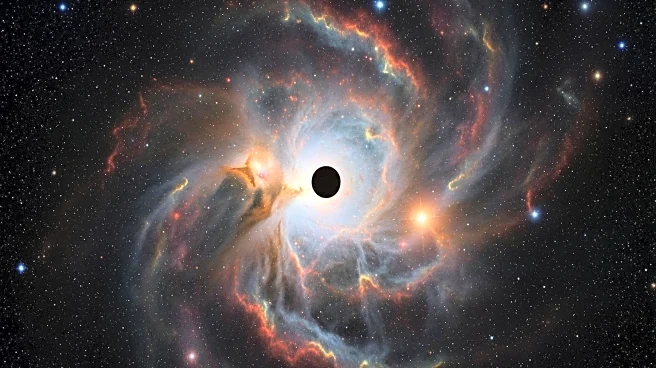What is the story about?
What's Happening?
Astronomers have reported the first-ever detection of strong phosphine signatures on a brown dwarf, a celestial body more massive than planets like Jupiter but not large enough to sustain hydrogen fusion like stars. This discovery, detailed in a Science paper, marks a significant development in the field of astrobiology. The brown dwarf, named Wolf 1130C, is located approximately 54.1 light-years from Earth. The detection of phosphine, a molecule often considered a potential sign of life, was made using spectral data from the James Webb Telescope’s Near-Infrared Spectrograph. The presence of phosphine on Wolf 1130C is believed to be the result of natural, abiotic processes, rather than biological activity. This finding challenges previous assumptions that phosphine could be a reliable biosignature, as it suggests that phosphine can form in environments without life.
Why It's Important?
The detection of phosphine on a brown dwarf has significant implications for the search for extraterrestrial life. Phosphine has been considered a potential biosignature, especially following its controversial detection on Venus. However, the discovery on Wolf 1130C indicates that phosphine can exist in environments without biological activity, complicating its use as an indicator of life. This challenges existing models and suggests a need for a deeper understanding of phosphorus chemistry in low-temperature atmospheres. The findings could lead to revisions in how scientists interpret potential signs of life on other planets and celestial bodies, impacting future astrobiological research and exploration missions.
What's Next?
Researchers are expected to continue studying phosphine and its formation in various cosmic environments. The next steps may involve searching for other celestial bodies with similar phosphine signatures to better understand the conditions that lead to its presence. This could help refine models of phosphorus chemistry and improve the criteria for identifying biosignatures. The ongoing research may also influence future missions to planets like Venus, where phosphine detection has sparked debates about potential life. As scientists work to unravel the complexities of phosphine formation, the findings could reshape the strategies used in the search for extraterrestrial life.
Beyond the Headlines
The discovery of phosphine on Wolf 1130C highlights the complexities of identifying biosignatures in space. It underscores the importance of considering environmental contexts when evaluating potential signs of life. The findings suggest that no single molecule can be deemed a biosignature without understanding the surrounding environment. This emphasizes the need for comprehensive studies of celestial bodies and their atmospheres to accurately assess the potential for life. The research also reflects the broader challenges in astrobiology, where the interplay between life and its environment must be carefully examined to draw meaningful conclusions.
AI Generated Content
Do you find this article useful?

















